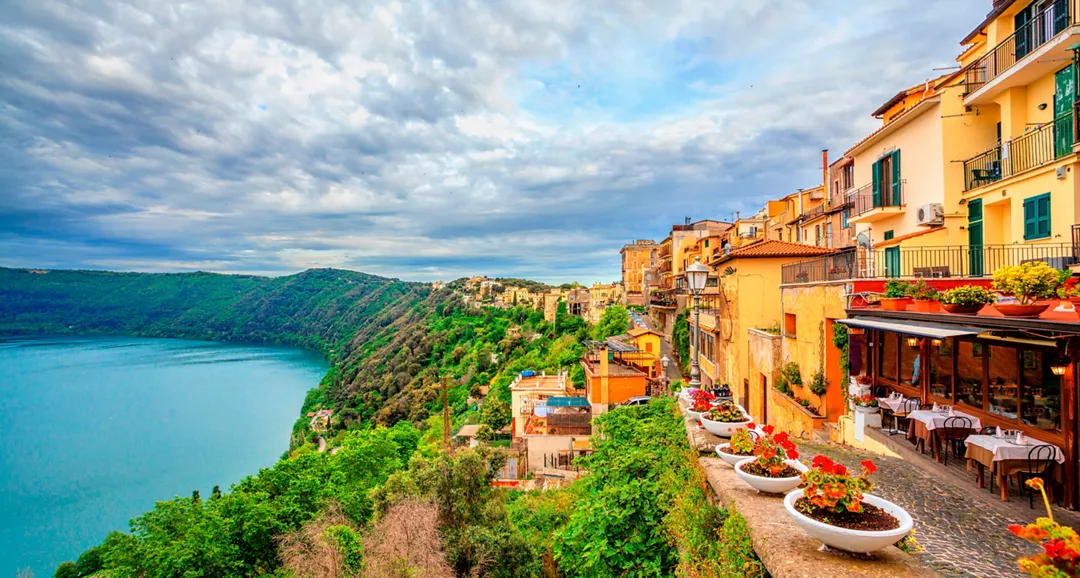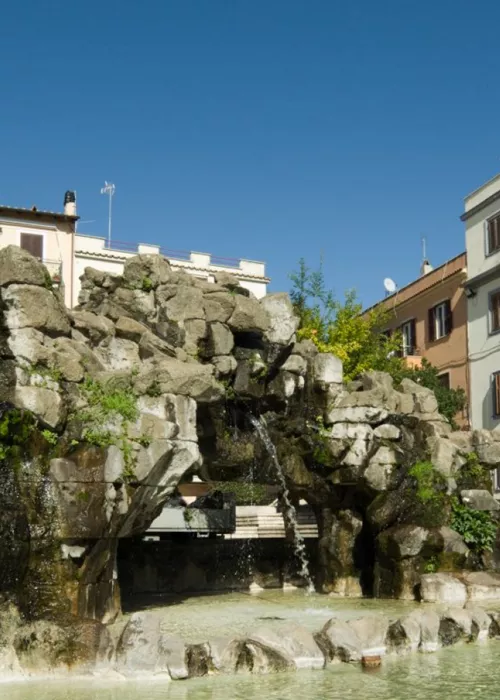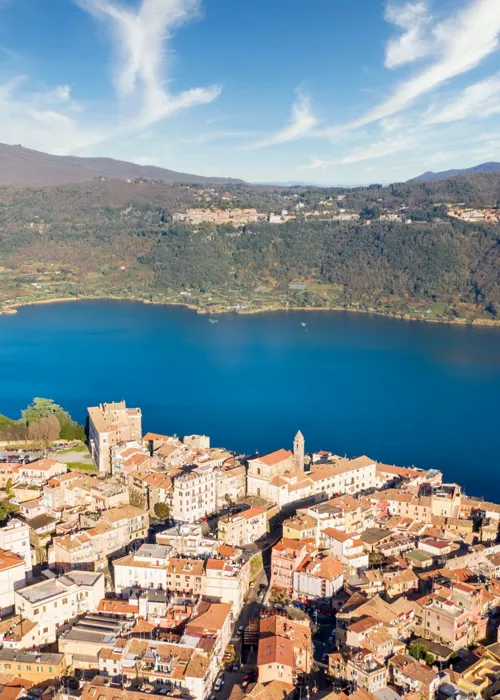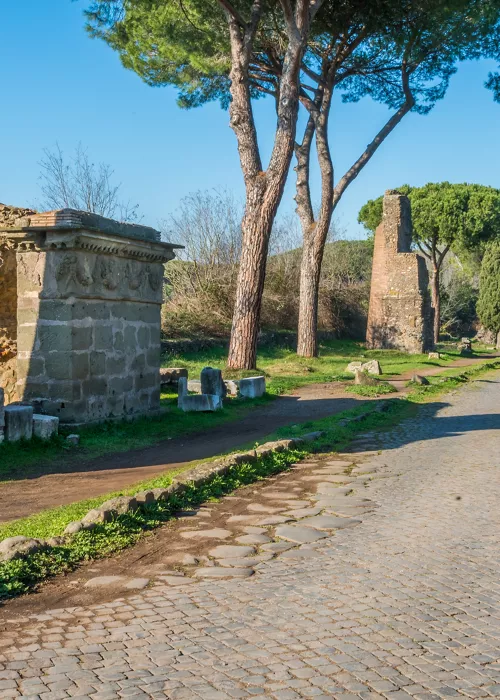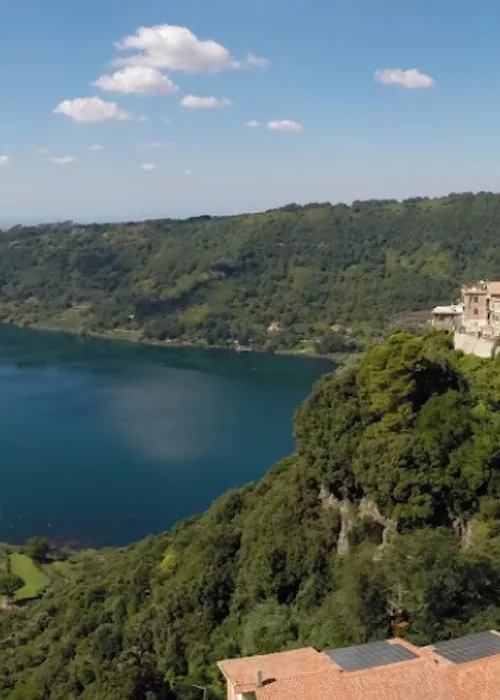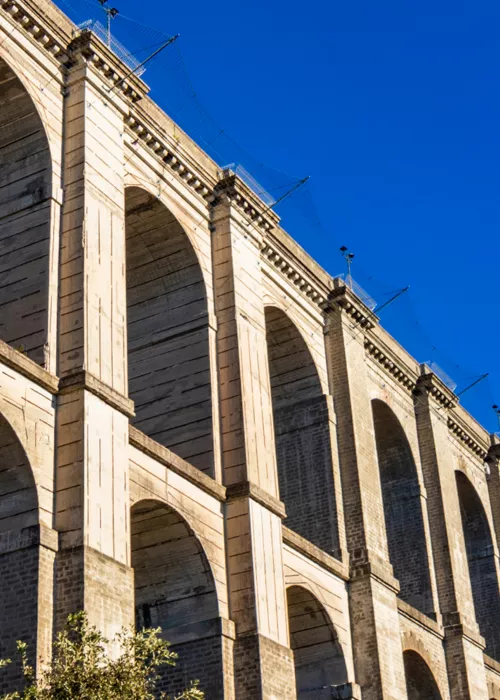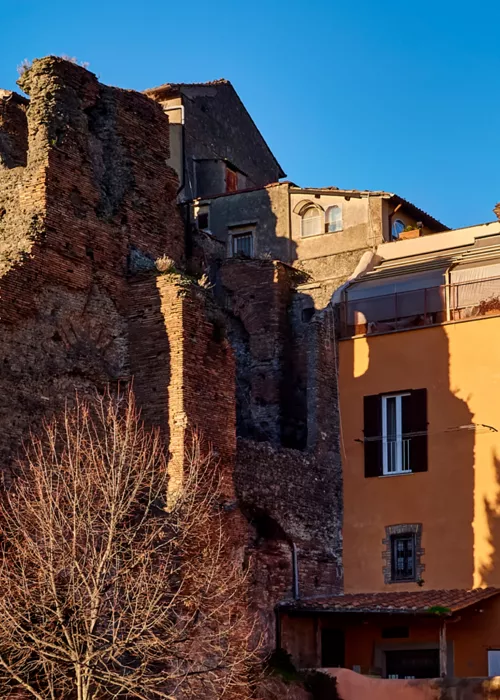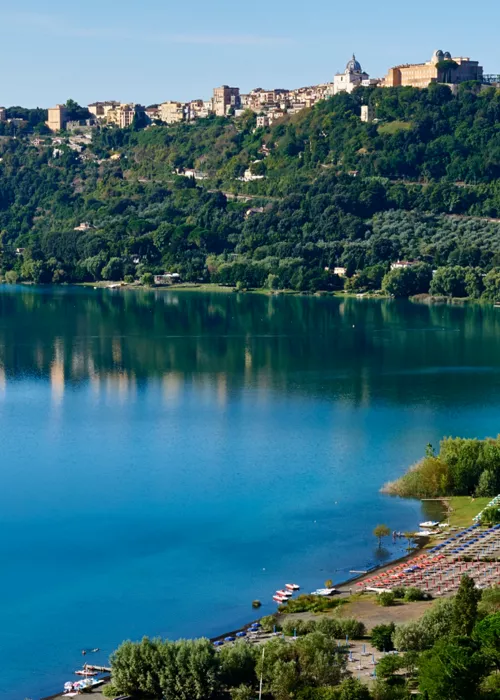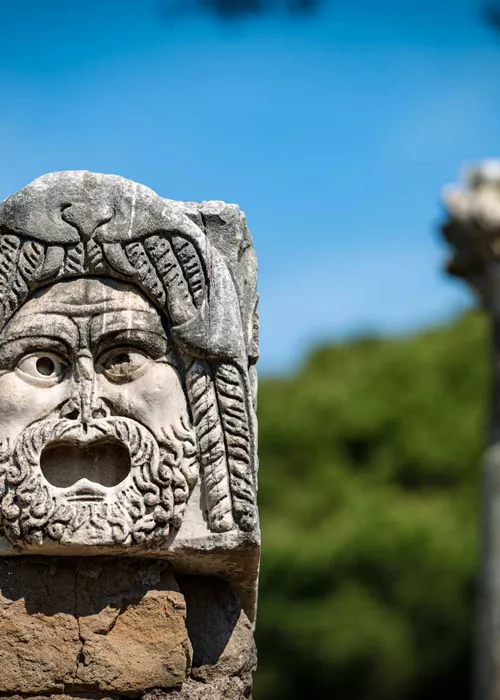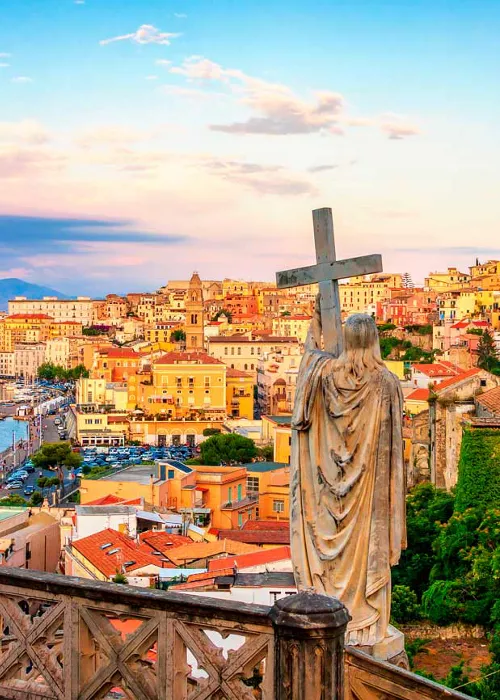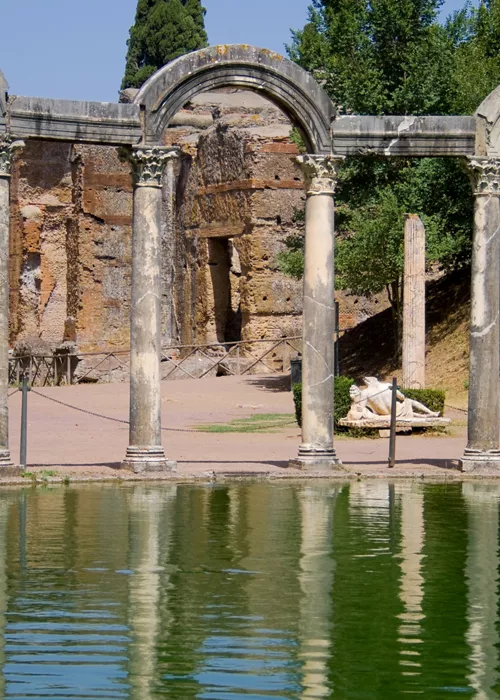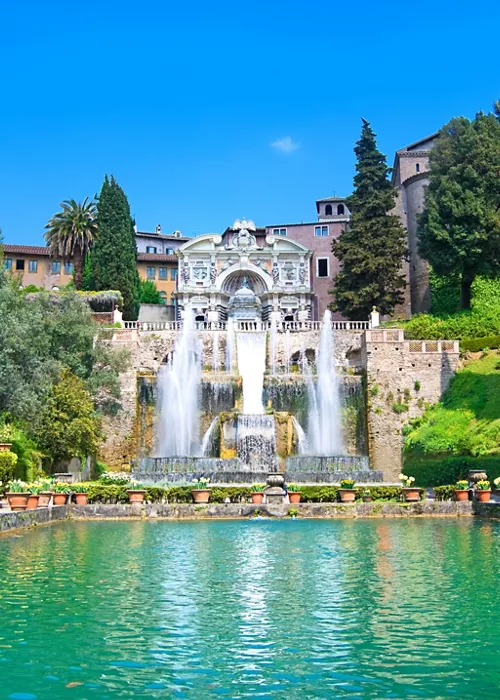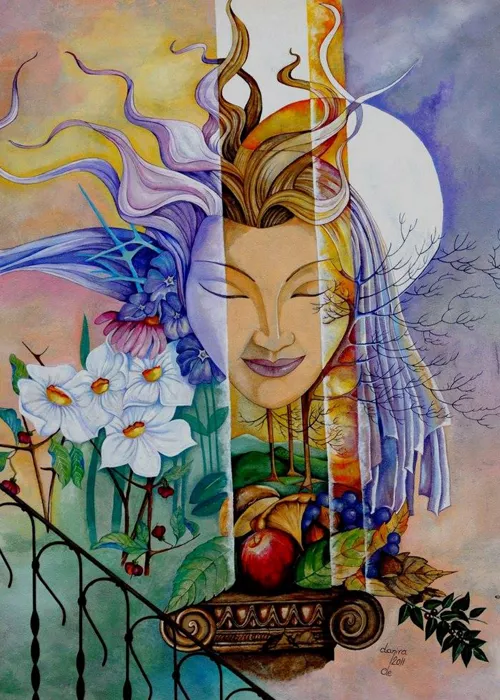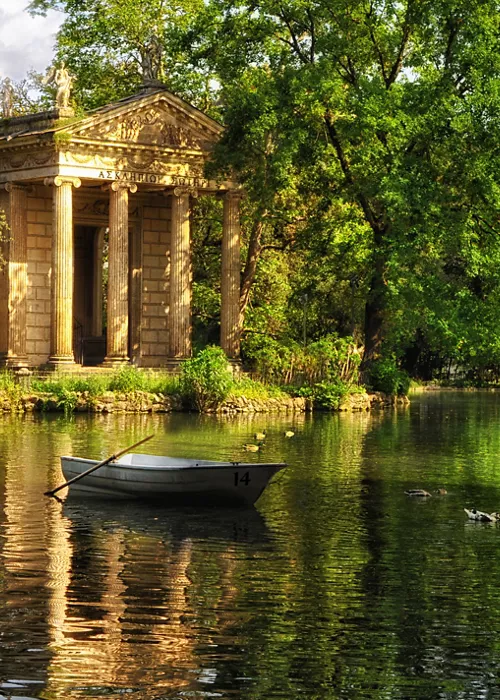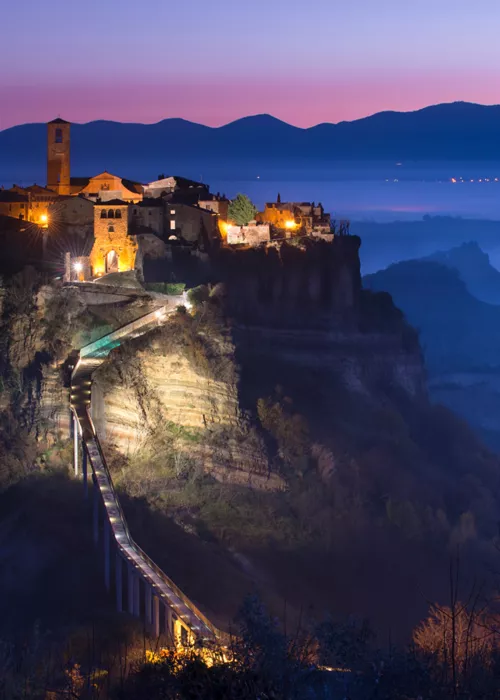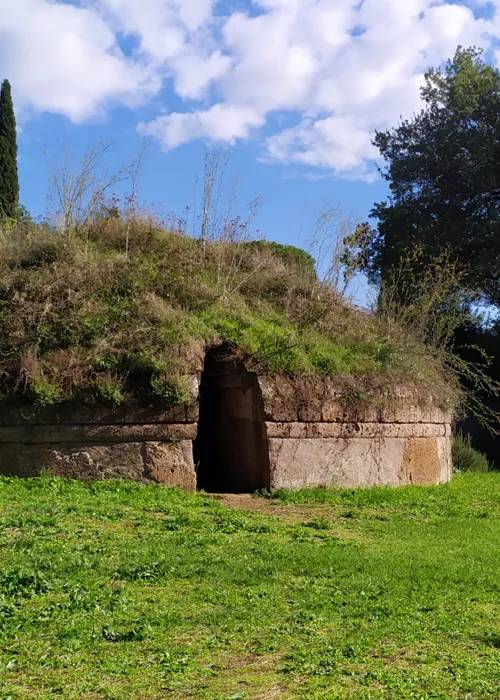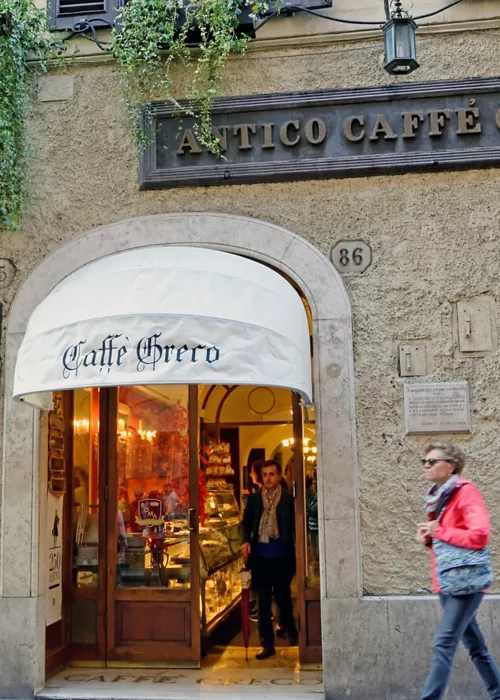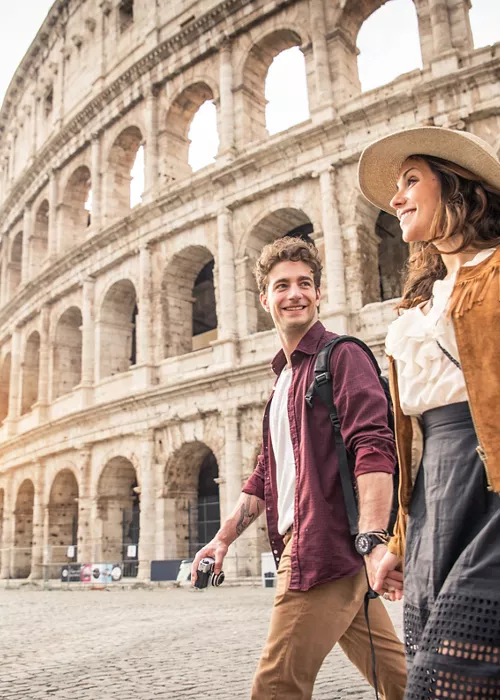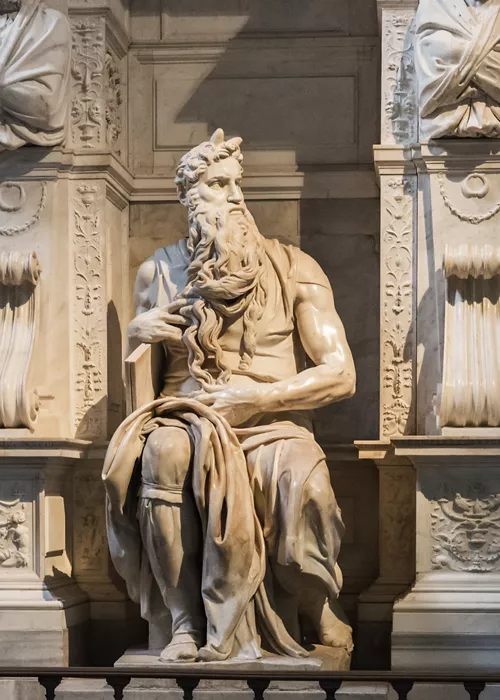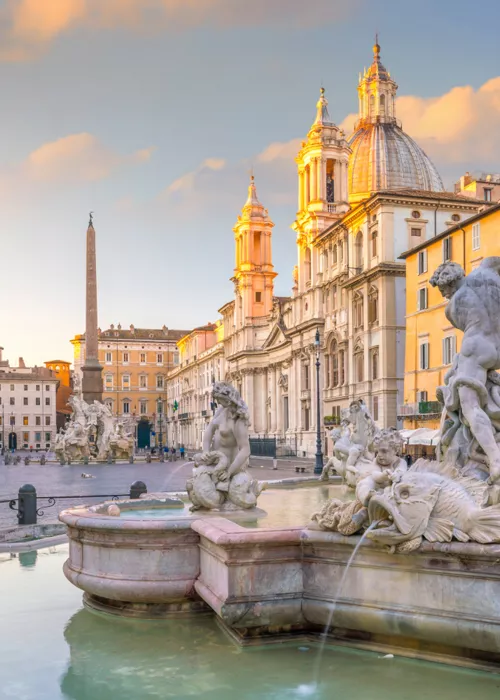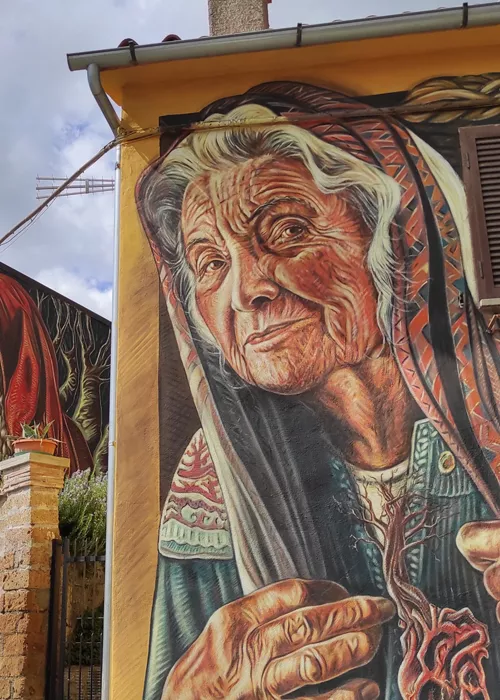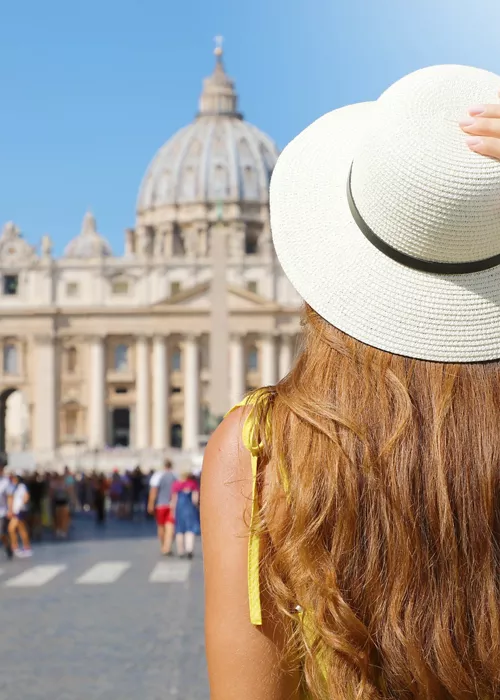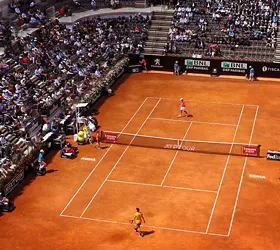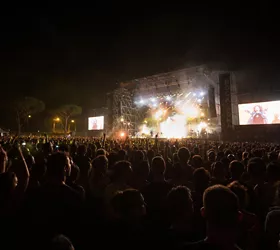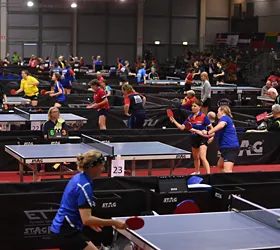Castelli Romani Regional Park
5 minutes
Villages, ancient towns, villas, Medieval castles, and archaeological ruins animate the Regional Park of the Castelli Romani, in the Province of Rome. Located in the Alban Hills, in the past the Castelli Romani were a favorite resort for the Capital's noble families as well as for Popes.
9,500 hectares of protected land, many animal species, such as badgers, martens, peregrine falcons, porcupines, and especially the wolf (a key component in the local ecosystem) also call this their habitat.
Fifteen municipalities make up part of the Park of the Castelli Romani however, for an already-exhaustive window onto the area, organize a tour of just six of them, beginning with Lanuvio, a Medieval village near Velletri.
Lanuvio
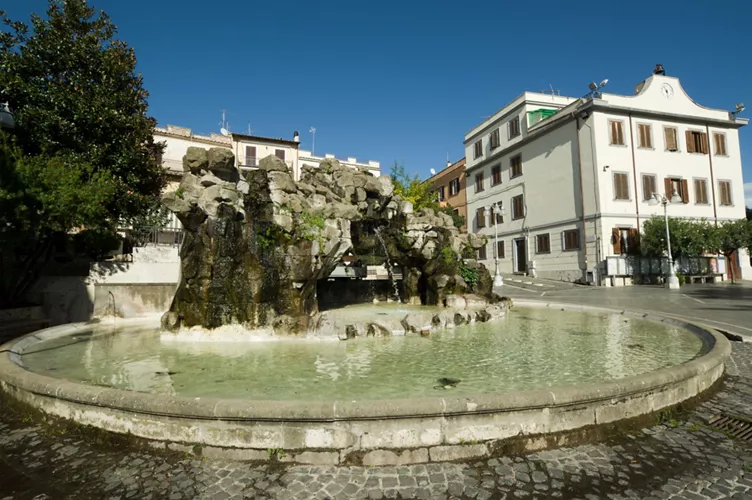
The village center is surrounded by walls of peperino (a magmatic rock); passing through them, one enters an ancient atmosphere of homes, palaces and churches that have been perfectly-preserved. Walking the streets and alleyways, one reaches the 14th-century fortress, with its two striking, cylindrical and overlapping towers; at one time a jail, it is now the municipal wine consortium. Visitors can taste the fine D.O.C. wines of the Lanugini Hills as they admire the intriguing exhibition of agricultural instruments used for winemaking. Do not miss the 15th-Century Baronial Mansion, built by the Colonna Family, and the nearby Fountain of the Scogli, designed by Carlo Fontana in 1675; also worthy of visits are the Medieval Collegiate Church of Santa Maria Maggiore, restored in the 17th Century, the Loreto Bridge (also in peperino) that dates back c. 2nd Century BC, and the Church of the Madonna delle Grazie, dating back to the 16th Century and retaining the painting that each year is carried in procession as a sign of devotion. Green thumbs should take the occasion to attend the market fair, "Lanuvio in Pink," featuring 100 varieties of ages-old, newer, and English roses every May 1st.
Genzano
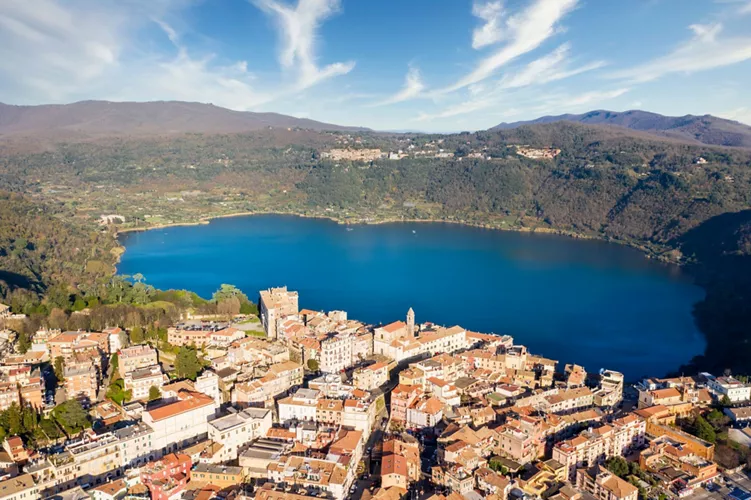
From Lanuvio, along a scenic road lies Genzano di Roma, picturesque town along the Via Appia that extends over the outer slope of the crater Lake of Nemi. The historic center is rich in history and art, including the 18th-Century Palazzo Sforza Cesarini, surrounded by an enormous park, the 17th-Century Capuchin Church, and the Church of the Holy Trinity. The three main streets, called "the Trident of Bacchus," begin in Piazza Fiasconi: the first is Via Garibaldi, that leads to the shore of Lake Nemi, while the others are Via Buozzi and Via Berardi that leads to the Church of Santa Maria della Cima. Via Berardi, during the occasion of the Feast of Corpus Domini, is completely covered by an artistic flowered carpet of about 2000 m², the protagonist of the historic event of the Infiorata.
Ariccia

Also on the Via Appia is Ariccia, artistic treasure of the Castelli Romani. On view here is one of the finest architectural examples of the European Baroque, a work of Gian Lorenzo Bernini and Carlo Fontana: The monumental complex of Piazza di Corte. The complex includes Chigi Palace, with its rich halls, stucco decorations and precious antiques, along with the ornaments of the walls in original leather from Cordoba, the large park surrounding it, and the Collegiate Church of Santa Maria Assunta, inspired by the Pantheon in Rome. Two other religious complexes to see are the Sanctuary of Santa Maria di Galloro and the deconsecrated Church of San Nicola di Bari. Foodies will appreciate this area's fraschette, a type of restaurant selling the delicious Ariccia pork (porchetta). After traversing the famous bridge of Ariccia, a monumental viaduct 197 feet high; built by Pope Pius IX, after two kilometers it leads to Albano Laziale.
Albano Laziale
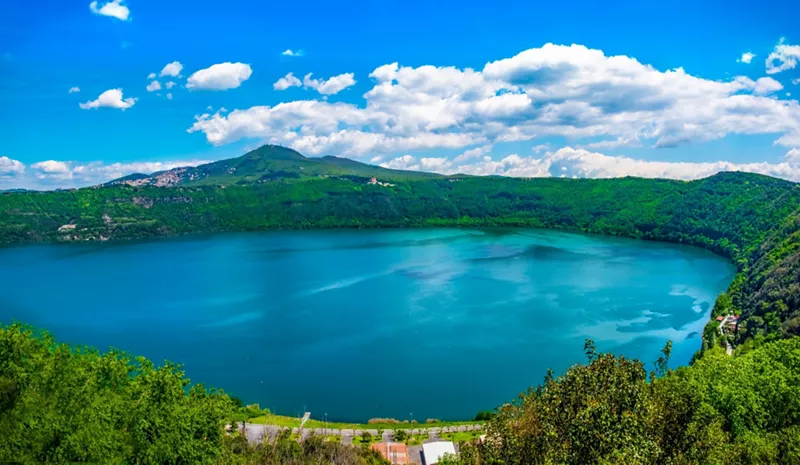
Picturesque village nestled in the volcanic Alban Hills and on the shores of Lake Albano, Albano Laziale is famous for its majestic Cathedral of St. Pancras in the Baroque style, and for its many ancient Roman finds: the rotund, Romanesque Church of Santa Maria; the Pretoria door, with three openings in lava stone; the Cisternone, underground storage built by Septimius Severus and still used to this day for the city water supply; the Roman amphitheatre; the tomb of the Horatii and Curiatii, a majestic parallelepiped construction in tuff, known as the tomb of the legendary heroes. The catacombs of San Senatore and the Civic Museum are worth a visit. The Catacombs date back to the 3rd Century and represent the largest suburban cemeteries. In the Civic Museum, housed in the luxurious Villa Ferrajoli, is a valuable collection from prehistory and protohistory.
Castel Gandolfo
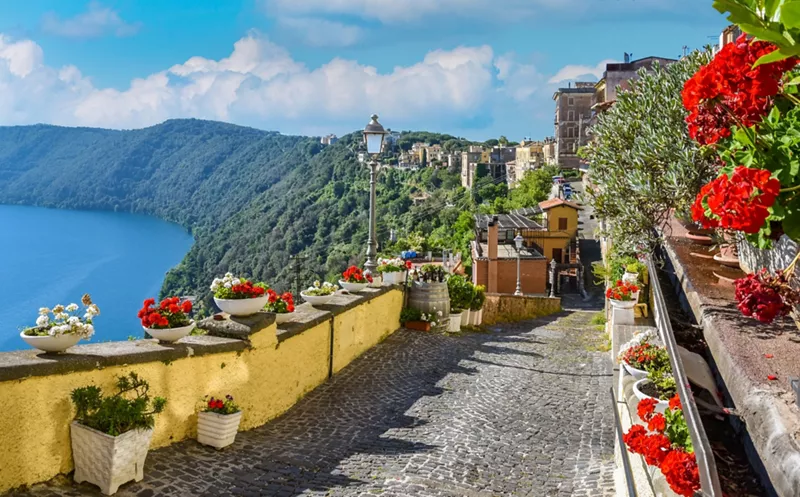
Another stop on a tour of Park of the Castelli Romani is Castel Gandolfo. This village overlooking Lake Albano has been the holiday destination of popes, cardinals and Roman Curia for centuries. Originally the residence of the Savelli Family, Urban VII transformed it into a Papal Palace in 1623. It also houses the most important astronomical observatory, known as "the Vatican Observatory." The surrounding countryside also boasts numerous valuable monuments: the Church of St. Thomas of Villanova, by Gian Lorenzo Bernini; the 16th-Century Roman gate; the majestic Villa Clodius, built in the Republican era; the Baths of Diana, created under Domitian's rule. Equally-beautiful and intriguing are the remains of the ancient villas of Castel Gandolfo, the Albanum Domitiani (the country house of the emperor Domitian), and Villa Barberini and Villa Cybo, connected by a bridge and a loggia leading to the papal palace.
Frascati
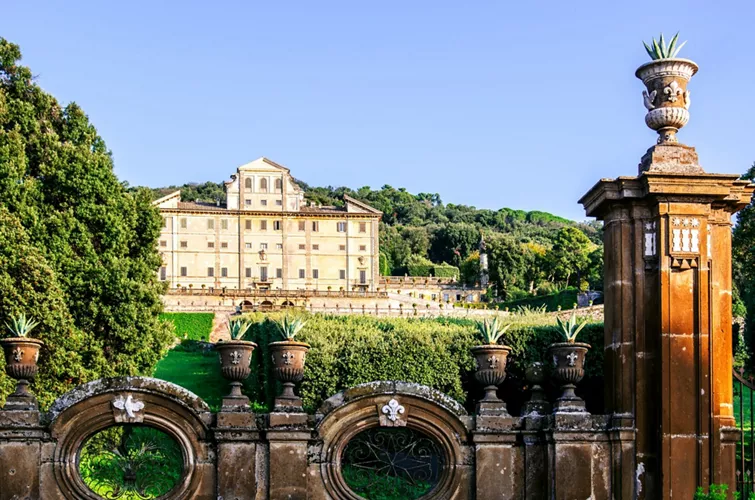
From Castel Gandolfo, once having traversed Wine Country that is Marino, we reach the last point on the journey: Frascati. The town is famous for its villas built by the papal nobility from the 16th Century, to serve as lodging for the representative delegation and as summer vacation residences. These beautiful villas, built by the most prestigious architects and artists of the 16th and 17th centuries, are surrounded by cultivated land, forests and scenic gardens. Other rather well-known villas include Villa Aldobrandini, Villa Falconieri, Villa Torlonia, Villa Mercede, Villa Grazioli and Villa Mondragone. The Regional Park of the Castelli Romani (Parco Regionale dei Castelli Romani) organizes tours of some of these villas.

